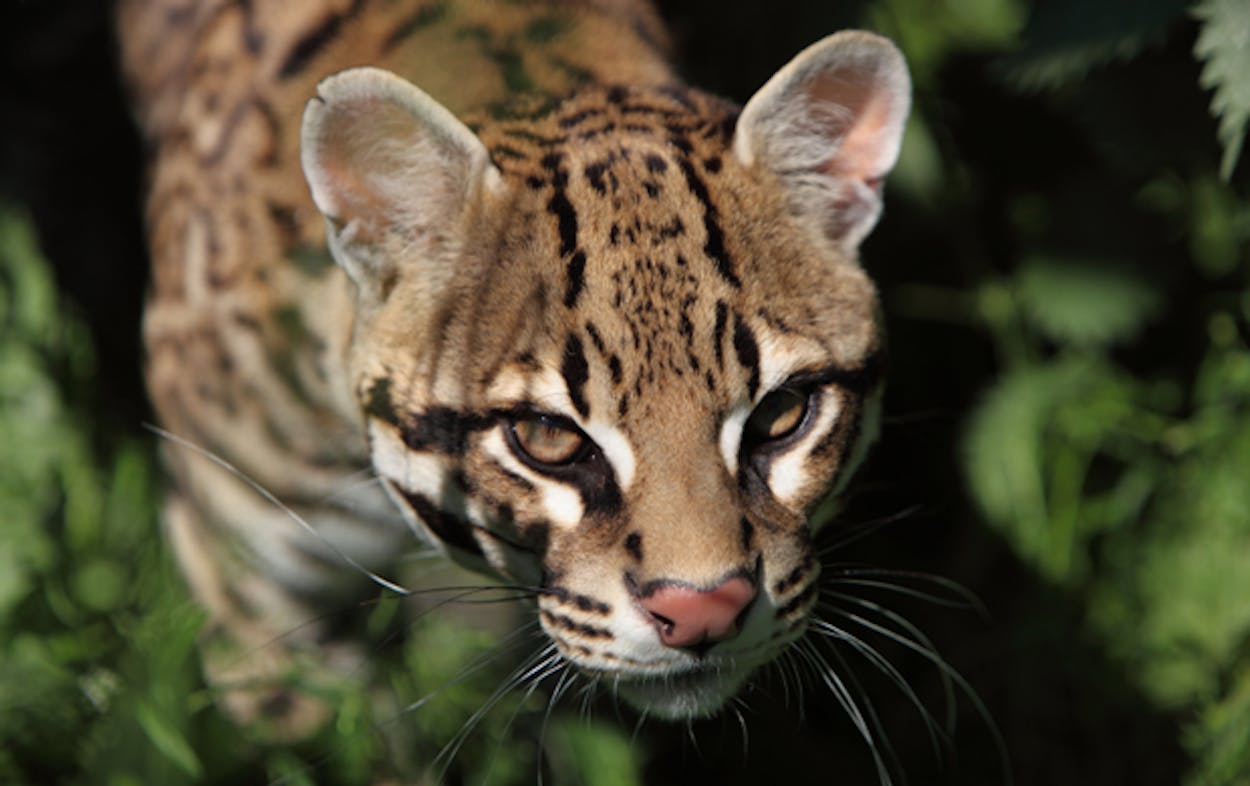Communities along the Rio Grande have long decried the erection of the border fence, saying it separates communities that are often considered to be a unit. But it isn’t just humans that are affected by the controversial structure. Biologists are talking about how the U.S.-Mexico border fence adversely impacts endangered species and other animals that live on both sides of the border, according to an article in the Wildlife Professional. “For roughly two decades, lawmakers and environmentalists have tussled over what are often mutually exclusive priorities—cracking down on illegal immigrants versus protecting natural resources,” Divya Abhat wrote.
Seventy miles of fence in South Texas divide the natural habitats of gulf coast jaguarundis, bobcats, and ocelots. Abhat gives an account of the research of Mitch Sternberg, lead biologist for the South Texas Refuge Complex, who has been examining how the disruption has impacted the cats:
Using cameras and radio collars, his team tracked the movements of several bobcats and discovered that when fence construction began, the cats began to move in search of new habitat. One pair of bobcats trapped in stringers of habitat on the north side of the fence died after being hit on a highway as they attempted to cross to the remainder. They no longer had access to the Rio Grande River and its habitat corridors.
The future of America’s ocelots may hang in the balance. Fewer than fifty of the cats remain in Texas, which represents the northernmost reach of their range. Genetic diversity can suffer when populations are isolated as animals are less able to find suitable mates. Research shows that a “close genetic link” exists between ocelots found in Texas and those found in Tamaulipas, suggesting they interbreed. “Maintaining and restoring wildlife corridors between the U.S. and Mexico is critical to the long-term survival of ocelots in the U.S.,” Sternberg said.
Birds are also impacted by the barrier. Cactus ferruginous pygmy owls fly just four feet above the ground and cannot clear the fence, Abhat writes. In 2009, the Cornell Lab of Ornithology’s All About Birds addressed the problems the fence poses to migratory bird populations, including some tropical species that “make their only appearance in the U.S.” in the Rio Grande Valley. “Flashy Great Kiskadees, intensely mauve Red-billed Pigeons, and so-small-you-might-miss-them Least Grebes and Ferruginous Pygmy-Owls are just some of the species you would otherwise have to leave the country to see. A few don’t occur any farther than a dozen miles north of the border,” Hugh Powell wrote.







